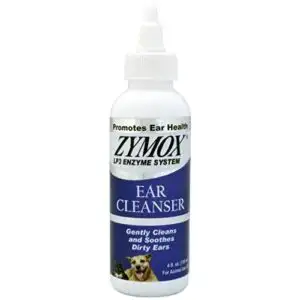This site is supported by our readers. We may earn a commission, at no cost to you, if you purchase through links.
The American Bully dog stands as one of the most misunderstood breeds in modern canine culture, often confused with its distant cousin, the American Pit Bull Terrier. Born from selective breeding programs in the 1990s, this relatively new breed was designed with a singular purpose: to create a loyal companion with the physical presence of a guardian but the temperament of a family dog.
What emerges is a muscular powerhouse that defies expectations—a dog that can weigh over 100 pounds yet show considerable gentleness with children when properly raised. Understanding this breed’s unique combination of strength and sensitivity becomes essential for anyone considering bringing one home, as their care requirements extend far beyond basic feeding and walks.
Table Of Contents
- Key Takeaways
- American Bully Breed Overview
- Temperament and Family Compatibility
- Health Issues and Care Requirements
- Training, Behavior, and Lifestyle
- Top 6 Products for American Bully Care
- Frequently Asked Questions (FAQs)
- What health issues are common in American bullies?
- How much exercise does an American bully need each day?
- What kind of food should I feed my American bully?
- Are American bullies good with cats and other small pets?
- Is it safe to have an American bully around young children?
- Are American Bullies banned in my country?
- How much does an American Bully puppy cost?
- Whats the difference between American Bully and Pitbull?
- Do American Bullies drool or snore excessively?
- Can American Bullies live in apartments comfortably?
- Conclusion
Key Takeaways
- The American Bully was selectively bred in the 1990s to combine the physical strength of pit bull terriers with a gentle, family-oriented temperament, creating a muscular companion dog that thrives on human interaction when properly socialized during the critical 3-14 week period.
- Despite their intimidating appearance, well-socialized American Bullies show over 80% positive interaction rates with children and display remarkably gentle behavior, though their care demands significant commitment including 30-60 minutes of daily exercise and vigilant health monitoring for common issues like hip dysplasia (affecting 42% of the breed) and breathing difficulties.
- Training success hinges on positive reinforcement techniques that achieve 90% obedience rates, but prospective owners must navigate substantial practical challenges including breed-specific housing restrictions, insurance exclusions, and lifetime costs averaging $15,000-$20,000.
- The breed’s five recognized size varieties (Standard, Pocket, Classic, XL, and controversial Micro/Exotic types) share a consistent temperament profile emphasizing loyalty and eagerness to please, though several countries including the UK have enacted breed bans citing public safety concerns despite evidence that proper socialization dramatically reduces aggression risk.
American Bully Breed Overview
The American Bully emerged in the 1990s as a companion breed built on the foundation of the American Pit Bull Terrier, combining strength with a surprisingly gentle nature. While not recognized by major kennel organizations, this muscular dog has carved out its own identity through dedicated breeding standards and a growing community of devoted owners.
Understanding where this breed comes from and what sets it apart will help you decide if an American Bully fits your lifestyle.
Origins and Development
Since the 1980s, your American Bully’s breed history has been shaped by selective breeding that combined American Pit Bull Terriers (around 60% genetic contribution) with American Staffordshire Terriers and various Bulldog breeds. This deliberate breed development spanned roughly 20 years before the American Bully Kennel Club offered recognition in 2004, establishing early standards that defined the muscular, companion-focused temperament you’ll find in today’s dogs.
Especially, David Wilson pioneered the breed’s development.
Recognized Standards and Varieties
After the breed’s initial development, breed standardization emerged through key registries like the American Bully Kennel Club (ABKC) and United Kennel Club (UKC). You’ll find five recognized American Bully breed varieties defined by size variations: Standard (17-20 inches), Pocket (under 17 inches), Classic (lighter build), XL (20-23 inches), and the controversial Micro and Exotic types. Registry differences exist regarding ethical breeding practices, particularly around extreme size breeding that can compromise bully health.
The breed is known for its people-oriented nature, thriving on human interaction.
Physical Characteristics and Appearance
Beyond the variety classifications, you’ll notice this breed’s unmistakable physical presence starts with its square, heavily muscled body proportions—males generally standing 17-20 inches tall.
The cranial structure features a broad, flat skull with a short muzzle, while coat characteristics include a glossy, short coat under ½ inch long.
Their limb structure showcases straight, powerful legs, and tail conformation extends naturally to approximately hock level.
Common Colors and Markings
This powerful build comes wrapped in a wide spectrum of coat colors—from classic black and blue to striking brindle genetics.
You’ll spot piebald patterns with irregular white markings across many American Bullies, reflecting their genetic diversity.
While color prevalence varies, breed standards accept nearly all combinations except merle (disqualified due to health risks) and albinism.
Temperament and Family Compatibility
Understanding your American Bully’s temperament is essential before welcoming one into your home. These dogs have a reputation that doesn’t always match reality, so it’s important to separate fact from fiction regarding their behavior around family members.
Let’s look at what you can actually expect from this breed’s personality, social needs, and compatibility with your household.
Personality Traits
The American Bully temperament is defined by confidence, stability, and friendliness—traits breed standards consistently emphasize. Despite their muscular build, American Bully breed characteristics include a gentle demeanor when properly socialized, challenging common misconceptions about aggression in powerful breeds.
You’ll notice loyalty and affection in how these dogs bond with their families, showing an eager-to-please nature that makes training rewarding.
Interaction With Children and Pets
When properly socialized, you’ll find these family dogs surprisingly patient with children, displaying gentle behavior that contradicts their imposing appearance. However, child safety demands supervised play, especially considering breed-specific data showing concerning attack statistics since 2021.
- Child friendliness: Generally affectionate and tolerant when trained early
- Canine friendliness: Multi-pet households succeed with proper introduction and management
- Prey drive: Variable across individuals, requiring careful monitoring around small animals
Sociability depends heavily on your commitment to early training.
Socialization Needs
During the critical period between 3 and 14 weeks, your American Bully’s socialization methods shape lifelong behavioral impact. Early socialization through positive exposure to diverse environments reduces aggression by 40-60% and prevents anxiety-related problems.
Early socialization between 3 and 14 weeks shapes your American Bully’s lifelong behavior and reduces aggression by up to 60%
Inadequate socialization leads to fearfulness and reactivity, underscoring owner responsibility in fostering friendliness.
Consistent social experiences throughout puppyhood build the stable American Bully temperament and behavior you’re seeking.
Suitability as a Family Dog
Your American Bully’s family suitability depends on early socialization and consistent training. Well-socialized Bullies show positive child interaction rates exceeding 80%, displaying gentle, protective instincts that make them excellent family dogs.
Their temperament concerns are minimal when properly raised, though their high activity levels demand commitment. American Bully family suitability thrives when you integrate training with daily family routines, ensuring sociability and child friendliness.
Health Issues and Care Requirements
American Bullies are prone to several inherited conditions that you’ll need to watch for throughout their lives. Beyond managing these health risks, your dog will need regular exercise, a carefully balanced diet, and consistent grooming to stay in top shape.
Let’s break down what it takes to keep your American Bully healthy and thriving.
Common Health Problems
While American Bullies make loyal companions, you’ll need to stay vigilant about their health. This breed faces a higher-than-average risk of inherited conditions that can affect their quality of life and longevity.
- Hip Dysplasia and Elbow Dysplasia: About 42% of tested American Bullies show hip dysplasia, making joint issues a primary concern
- Skin Allergies: Atopic dermatitis affects 3–15% of the breed, causing persistent itching and discomfort
- Cardiac Issues: Congenital heart disease, including valve abnormalities, threatens puppies and seniors alike
- Brachycephalic Airway Syndrome: Short-nosed varieties struggle with breathing difficulties that worsen with exertion
Exercise and Activity Needs
Your American Bully needs at least 30 to 60 minutes of daily exercise to stay physically and mentally balanced. Activity types like brisk walks, fetch, tug-of-war, and swimming provide excellent energy management while protecting their joints.
Age adaptations matter—puppies require shorter bursts, while older dogs benefit from gentler routines. Exercise equipment such as flirt poles and puzzle toys keeps workouts engaging and purposeful.
Nutrition and Weight Management
Keeping your American Bully at a healthy weight starts with understanding their unique needs. Dietary protein should hit 30% to support that impressive muscle mass, while caloric intake varies by size—Pocket Bullies need about 375-875 kcal daily, Standard types 2,600-3,500 kcal, and XL varieties over 3,500 kcal.
Weight strategies matter because nearly half of American dogs face obesity. Watch for nutrient deficiencies like protein shortfalls that cause flaky skin, and consider supplements for joint support when recommended by your vet.
Grooming and Maintenance Tips
Your Bully’s short coat makes grooming upkeep straightforward. Weekly brushing controls coat shedding and distributes natural oils, while baths every 2-3 months keep skin healthy.
Essential grooming tasks include:
- Nail trimming every 2-4 weeks prevents joint issues affecting 60% of dogs
- Regular ear cleaning reduces infection risk in breeds with narrow canals
- Dental hygiene prevents tartar buildup
- Monitoring for skin allergies from environmental triggers
Consistent grooming routine catches problems early.
Training, Behavior, and Lifestyle
Training your American Bully isn’t just about teaching commands—it’s about shaping a well-adjusted companion who fits seamlessly into your daily life.
These dogs are smart and willing, but they need the right approach to thrive. Let’s break down what you need to know about their trainability, behavioral tendencies, and what it really takes to be a responsible Bully owner.
Intelligence and Trainability
How smart is your American Bully? These dogs demonstrate impressive cognitive abilities and problem-solving skills that make training a genuine pleasure. Their intelligence shines through measurable indicators like quick command responsiveness and adaptive learning.
However, American Bully intelligence isn’t just about genetics—handler impacts and your training approach greatly shape outcomes. With proper understanding of their mental capabilities, you’ll discover their full potential as trainable, responsive companions.
Positive Reinforcement Techniques
Once you understand your Bully’s intelligence, you’ll want to utilize it through positive reinforcement training. This approach achieves 90% success rates in obedience training, far outpacing traditional methods.
Here’s what works best:
- High-value treats accelerate learning for new commands and complex behaviors
- Praise and physical affection strengthen your bond while reinforcing good choices
- Clicker training marks exact moments of correct behavior, improving clarity
Consistency matters more than excellence.
Managing Aggression and Behavioral Challenges
Although early socialization during your Bully’s first 12 weeks dramatically reduces aggression risk, genetic predispositions and environmental triggers can still surface later.
You’ll need management techniques like structured exposure, removing stress factors, and maintaining consistent routines.
If reactive behaviors emerge despite your training efforts, professional intervention—including veterinary behaviorists and, when necessary, medication—achieves 80%+ success rates when combined with behavioral modification.
Lifestyle Compatibility and Owner Responsibilities
Before bringing home an American Bully, you’ll face significant Housing Needs challenges, as many landlords restrict the breed. Legal Issues include insurance exclusions and breed bans in some areas.
Factor in a daily Time Commitment of 1-2 hours for exercise and Financial Costs averaging $15,000-$20,000 lifetime.
Despite these hurdles, experienced owners report high Owner Success rates with proper dedication to this loyal companion.
Top 6 Products for American Bully Care
Taking care of your American Bully doesn’t have to be complicated when you have the right tools on hand. From keeping their short coat healthy to maintaining their dental hygiene, having quality products makes routine care easier and more effective.
Here are six essential items that will help you meet your Bully’s specific care needs.
1. Hertzko Self Cleaning Slicker Pet Brush
Your American Bully’s short, glossy coat thrives with the right grooming tools. The Hertzko Self Cleaning Slicker Brush delivers outstanding brush effectiveness across various coat types. Its fine, angled bristles remove loose fur and detangles without scratching, offering better bristle comfort compared to alternative brushes.
The push-button self-cleaning mechanism simplifies cleaning ease—just retract the bristles and wipe away trapped hair. At $12.99, this lightweight tool makes American Bully grooming straightforward, promoting healthier skin and reducing shedding when used regularly as part of your dog breed care routine.
Best For: American Bully owners looking for an affordable, easy-to-clean brush that removes loose fur and keeps their dog’s short, glossy coat healthy without causing discomfort.
- Self-cleaning button makes removing trapped hair quick and hassle-free, saving time between grooming sessions.
- Fine, angled bristles effectively capture loose fur and detangle without scratching sensitive skin, making grooming comfortable for your dog.
- Lightweight and ergonomic design at just $12.99 offers great value for regular maintenance of short-coated breeds.
- May not be the most effective tool for American Bullies’ short coats compared to brushes specifically designed for smooth, close-lying fur.
- Bristles can feel scratchy if too much pressure is applied, requiring a gentle hand during grooming.
- Not ideal for severe matting or heavy undercoats, which aren’t typical for American Bullies but may require additional tools if present.
2. OUAI Mercer Street Pet Shampoo
Your American Bully’s skin and coat deserve more than basic dog grooming. OUAI Mercer Street Pet Shampoo delivers spa-quality dog care at home.
This $32 formula combines aloe vera, rambutan seed extract, and panthenol for effective ingredient analysis that cleanses without stripping natural oils. Scent longevity lasts days, while sustainable packaging reflects thoughtful dog health priorities.
Though the value proposition challenges budget-conscious owners, pets with sensitive skin benefit from its paraben-free, SLS-free formulation. Regular use enhances shine and protects against pollution, making grooming sessions transform into bonding moments.
Best For: American Bully owners who want a gentle, hydrating shampoo that leaves their dog’s coat shiny and fresh-smelling for days without harsh chemicals.
- Keeps fur soft and shiny while protecting against pollution with nourishing ingredients like aloe vera and panthenol.
- Long-lasting scent means your dog smells great for several days after bath time.
- Free from parabens, SLS, and other harsh chemicals, making it safe for dogs with sensitive skin.
- At $32 per bottle, it’s significantly more expensive than most dog shampoos on the market.
- The fragrance may be too strong for pets with extreme skin sensitivities or allergies.
- Requires careful application to avoid contact with eyes, ears, and mouth during bath time.
3. Safari Professional Dog Nail Trimmer
Thick nails on your American Bully demand professional-grade tools, not flimsy clippers that bend under pressure. The Safari Professional Dog Nail Trimmer combines blade sharpness with safety features that prevent over-cutting during dog grooming sessions.
The ergonomic design reduces hand fatigue, while stainless steel construction ensures durability through years of American Bully care requirements. User feedback consistently highlights its ability to slice through tough nails cleanly, making dog care less stressful. Though blades may dull over time, this trimmer transforms nail maintenance into a confident routine that protects your dog’s health.
Best For: Owners of large breeds like American Bullies who need a durable, professional-grade trimmer that can handle thick, tough nails without bending or requiring excessive effort.
- Sharp stainless steel blades cut through thick nails cleanly in one motion, reducing stress for both you and your dog during grooming sessions.
- Safety guard prevents over-cutting and protects against accidental injury, giving you confidence even if you’re new to trimming nails at home.
- Ergonomic non-slip grip reduces hand fatigue and provides better control, making it easier to get precise cuts on dogs with strong, resilient nails.
- Blades may dull after extended use and require sharpening or replacement to maintain peak performance.
- The safety guard can shift during use and doesn’t lock in place, which some users find frustrating when trying to maintain consistent cutting depth.
- May require multiple cuts for extremely thick nails, even though it’s designed for large breeds.
4. Zymox Bio-Active Enzyme Ear Cleaner
Your American Bully’s floppy ears trap moisture, creating a breeding ground for infections that no owner wants to battle. Zymox Bio-Active Enzyme Ear Cleaner tackles this American Bully health concern through its patented LP3 enzyme system, which breaks down microbial biofilms without harsh chemicals.
Usage protocols recommend daily application for 7-14 days during infections, with weekly maintenance preventing recurrence. The safety profile remains excellent when you follow directions, though you’ll want to avoid ruptured eardrums.
Strong market reception from veterinarians and pet owners confirms its enzyme efficacy against bacteria, yeast, and fungi plaguing American Bully care requirements.
Best For: American Bully owners dealing with recurring ear infections or looking to maintain clean, healthy ears in dogs with floppy, moisture-trapping ear structures.
- Patented LP3 enzyme system breaks down biofilms and fights bacteria, yeast, and fungi without harsh chemicals or antibiotics
- Gentle, non-toxic formula is safe for routine use and won’t irritate sensitive ears during cleaning
- Veterinarian-recommended with strong track record for preventing infection recurrence through weekly maintenance
- Strong, unpleasant odor that some pet owners find off-putting during application
- Not suitable for ears with ruptured or perforated eardrums without veterinary supervision
- Some dogs dislike the sensation of ear drops, which can make application challenging
5. Greenies Original Regular Dental Dog Treats
Your American Bully’s powerful jaw makes chewing mechanics work in your favor with Greenies Original Regular Dental Dog Treats. These VOHC-approved treats deliver tartar reduction of approximately 47% through mechanical cleaning action, reaching down to the gumline where plaque accumulates.
You’ll appreciate the treat safety profile when you supervise portion sizes—139 calories per large treat matters for American Bully weight management. Just practice allergen awareness, since wheat and soy ingredients don’t suit every dog’s digestive system in complete dog care routines.
Best For: American Bully owners looking for a veterinarian-recommended dental treat that uses mechanical cleaning action to reduce plaque and tartar buildup while freshening breath.
- VOHC-approved treats reduce tartar by about 47% and plaque by 40% with consistent use, making them clinically effective for maintaining oral health between vet visits.
- The chewy, abrasive texture works well with your American Bully’s powerful jaw, reaching down to the gumline where buildup happens most.
- Made with natural, digestible ingredients in USA facilities and includes beneficial components like omega-3 fatty acids from ground flaxseed.
- At 139 calories per large treat, you’ll need to watch portions carefully to avoid weight gain in your American Bully, especially if they’re less active.
- Contains wheat and soy, so they won’t work for dogs with those specific allergies or sensitivities.
- Can get expensive when treating larger dogs or multiple pets regularly, and brushing teeth directly is still more cost-effective for optimal dental care.
6. Understanding Dog Intelligence Guide
Beyond physical care, you’ll want to understand your American Bully’s cognitive assessment capabilities through Stanley Coren’s guide on dog intelligence. Research shows breed differences in problem-solving and memory capabilities, with training impact greatly improving performance—untrained dogs solve tasks at 5%, while trained dogs reach 80% success rates.
The book evaluates over 100 breeds for obedience intelligence and provides practical American Bully training methods using positive reinforcement. You’ll learn dog breed training fundamentals and intelligence markers that shape effective training methods for your companion.
Best For: Dog owners and trainers who want to understand how their dog thinks, evaluate breed-specific intelligence differences, and tailor training programs based on cognitive capabilities.
- Offers practical assessment methods like memory tests and problem-solving exercises that you can actually use to measure your dog’s intelligence and track cognitive changes over time.
- Ranks over 100 breeds for working and obedience intelligence, helping you understand your dog’s natural strengths and set realistic training expectations.
- Explains how genetics, early socialization, and training frequency directly impact learning—giving you science-backed strategies to improve your dog’s performance through positive reinforcement.
- Some readers find the writing style dry and overly technical, lacking the engaging stories or humor that would make dense research more enjoyable to read.
- Certain chapters drag on with unnecessary detail that doesn’t add much practical value, making it feel longer than it needs to be.
- The book’s focus on rankings and obedience intelligence doesn’t fully capture other important aspects of dog smarts like emotional awareness or adaptive problem-solving in real-world situations.
Frequently Asked Questions (FAQs)
What health issues are common in American bullies?
Picture a muscular frame masking hidden vulnerabilities—hip dysplasia, skin allergies, and breathing issues top the list of American Bully health problems, alongside cardiac health concerns and metabolic disorders requiring vigilant, proactive care.
How much exercise does an American bully need each day?
Your Bully needs 30 minutes to 5 hours of daily exercise, depending on age and energy levels. Activities like brisk walks, tug-of-war, and agility training support muscle development while reducing destructive behaviors.
What kind of food should I feed my American bully?
Your American Bully needs high-quality dog food with at least 30% protein from sources like chicken or fish, 18–22% fat intake, and digestible carbohydrate choices. Focus on portion control and balanced micronutrient needs for best health.
Are American bullies good with cats and other small pets?
Can your dog share space peacefully with smaller companions? With early exposure and structured socialization, American Bullies can coexist successfully with cats—studies show 81% positive outcomes when raised together from puppyhood using proper risk mitigation protocols.
Is it safe to have an American bully around young children?
You can keep an American Bully with young children, but supervised interaction is essential. Responsible ownership requires proper training to manage breed-specific risks, ensuring family compatibility through careful attention to child-dog dynamics and temperament.
Are American Bullies banned in my country?
Notably, several countries, including the UK, Ireland, Turkey, and parts of Australia and Canada, have enacted American Bully breed restrictions or outright bans under dangerous dog legislation, citing public safety concerns despite ongoing legal challenges and enforcement issues.
How much does an American Bully puppy cost?
You’ll usually spend $2,000 to $4,500 for pet-quality puppies from reputable breeders, though bloodline influence, regional pricing, and quality factors can push show-quality American Bully puppy costs beyond $10,000 with breeding rights.
Whats the difference between American Bully and Pitbull?
While both fall under bully breeds, the American Bully was specifically developed in the 1990s for companionship, featuring a broader, stockier build and gentler temperament than the athletic, working-driven American Pit Bull Terrier.
Do American Bullies drool or snore excessively?
American Bullies don’t usually drool excessively, though snoring is common due to brachycephalic airway syndrome. Drooling causes include dental issues and excitement, while snoring solutions focus on weight management and veterinary assessment for health conditions.
Can American Bullies live in apartments comfortably?
Despite their muscular build, your American Bully can thrive in apartment living with adequate daily exercise, mental enrichment, and noise management training. However, you’ll need to verify breed restrictions and legal compliance beforehand.
Conclusion
Here’s the irony: while the American Bully dog was bred to look intimidating, you’ll likely spend more time explaining that your gentle giant wouldn’t hurt a fly than actually dealing with aggression.
This breed demands commitment—structured training, consistent socialization, proper nutrition, and ongoing health management.
If you’re prepared to invest the time and resources, you’ll discover what experienced owners already know: beneath that imposing exterior beats the heart of a remarkably devoted companion who thrives on human connection.




















